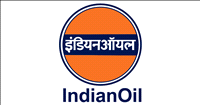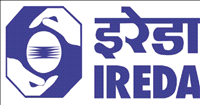Private telecom operators renege on rural commitment
By Venkatachari Jagannathan | 08 May 2001
The government's plan of one telephone in each village still remains a distant dream, with rural telephony, so far, being only all talk and very little of walking-the-talk!
Even private
basic service operators who have to offer a specified
number of rural connections as per their licence conditions
are yet to fulfil them. It seems that contravening the
licence conditions has now become the hallmark of all
telecom operators, be it mobile or basic services.
The parliamentary estimates committee has commented upon
this sorry state of affairs in its recent report.
The committee has also pulled up the government for lack
of decisive action taken against private telecom operators
reneging on the licence commitments relating to rural
connections. Expressing its concern over steady decline
in budgetary allocations for rural sectors, the committee
has highlighted the absence of a separate organisation
to look after rural telephony.
This brings us to the question, if the existing private
basic services operators are not able to offer the much-promised
rural connectivity, then why not have a separate set of
service providers called Rural Service Providers (RSP)
exclusively for rural areas at all?
Interestingly, favouring such a policy direction, the
Tamil Nadu government has written to the Centre some time
back but it is yet to get a reply.
Remarks Dr. Ashok Jhunjhunwala, head, department of electrical
engineering, IIT-Madras, and head of corDECT Wireless
in Local Loop (WLL) technology, "The technology and
the equipment being used by basic services operators now
is expensive. To see a return on their investment, they
will be focussing only on the high revenue generating
urban centres."
While opening up the telecom segment is a step in the
right direction, policy directions there after are not
conducive for expanding the telecom network to rural areas.
According to him, India has less than 30 million telephone
and less than 2 million internet connections. "India
needs a minimum of 150-200 million telephone and internet
connections if it has to become a knowledge-based economy,"
he asserts.
Contrast the number of telephone connections with that
of cable TV connections in the country. "We have
more than 40 million cable TV connections, all in a matter
of eight years," remarks Dr. Jhunjhunwala. This,
according to him, was possible only because the cable
TV industry is predominantly run by small operators and
services are affordable to most sections of the population.
"But
it’s not so in the case of telephones," he argues.
For instance, a private basic services operator has to
invest around Rs. 500 crore to roll out his services in
a state circle. The high
investment and operational costs would force the player
to target only the urban centres, often totally neglecting
the rural areas.
According to Dr. Jhunjhunwala, "The cost per line
is not less than Rs.32,000 and the revenue required should
be at least 35 per cent of the investment for the operations
to breakeven." He says that in developed countries,
it costs much less and requires just $350 per line per
year to service. Hence, it is affordable to 90 per cent
of the population.
In order to maintain their earning levels, western telecom
equipment companies started their research and development
(R&D) focus to provide add-on benefits to subscribers
but not on reducing the capital equipment cost, he opines.
On the other hand, the Indian conditions are entirely
different. The vast majority of the population needs a
telephone and internet connection at an investment of
Rs.10,000 per line. "If that happens, the total number
of telephone connections would jump to 150 to 200 million
and will be affordable to many," Dr. Jhunjhunwala
argues.
corDECT WLL that Dr. Jhunjhunwala propogates costs around
Rs.20,000 per line now. This will come down if the technology
is deployed on a mass scale, he asserts. The attractive
feature of this technology, having a coverage radius of
25 km and catering to 1,000 lines, is that it allows simultaneous
access to voice and internet traffic at 35/70 kbps.
"Telecom operators can earn higher revenue as it
is virtually two lines with a capital cost of one. The
system has all the features of a modern exchange like
call waiting, hotline, follow me, call transfer, call
conference, etc.
Given this technology that has been proven elsewhere in
the world and which is being used by the Mahanagar Telephone
Nigam Limited (MTNL) and the Bharat Sanchar Nigam Limited
(BSNL), he recommends having a new category of service
provider called Rural Service Provider (RSP).
As per his scheme of things, the RSPs will operate in
all areas of the country except in towns with a population
of one lakh or more. The RSP would be eligible to connect
to a state-wide telecom operator (BSNL/private basic service
operator) at the nearest point, paying connectivity charges
as per the applicable norms.
"As rural connectivity is the core focus of RSP,
there should not be any licence fee or revenue sharing
with the government, at least for the first 15 years.
Further, there should be no frequency charges an RSP for
the first ten years," suggests Dr. Jhunjhunwala.
The RSP should be made to pay the other charges that a
basic operator now pays, including physical connectivity
to the nearest BSNL exchange; 40 per cent of the STD call
charges for all STD calls routed through BSNL network
and 55 per cent of international call charges for international
calls routed through BSNL/VSNL networks.













.jpg)
















